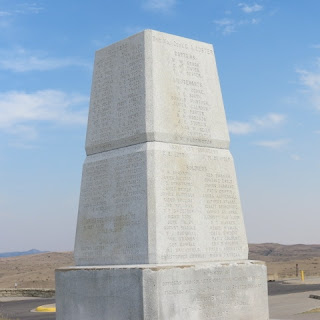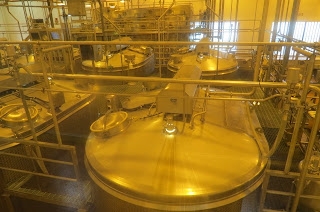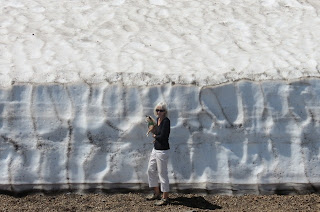I'll begin with an excerpt from the Park literature.
"The Little Bighorn National Monument memorializes a major battle fought in June 28, 1876 between Lakota, Cheyenne and Arapaho Indians against the United States Army. These tribes were fighting to preserve their traditional way of life as nomadic buffalo hunters. The U.S Army was carrying out the Grant's Administration's instructions to remove the Lakota, Sioux and Cheyenne peoples to the great Sioux Reservation in Dakota Territory."
We began by attending a presentation by a Park Ranger. I was impressed that he was very straight forward in not laying blame solely on the Indians. We then watched an excellent 25 minute film on the events of that fateful day.
I think the attached pictures will do a better job depicting the battle than I can writing about it.
Chief Sitting Bull, while did not participate in the battle as he was about 45 years of age and considered to old to do battle.
This explains the placement of the many Tombstone markers were scattered around the hillsides. Another marker estimated the Indian casualties estimated to be between 40 and 100.
A few of the scout that worked for the Army.
Tombstones, like the first, were scattered all about the property marking where U.S. soldiers fell.
We saw maybe four of these markers as the Indians carried off their dead and wounded.
While driving we saw these Indian Ponies standing on a rise overlooking the Little Big Horn River
When I saw this tree I named it "The Witness Tree". One can only imagine what it saw on that day.
The Little Big Horn River.
The "Last Stand Hill". General Custer's grave marker is there along with four members of his family who were fighting alongside him on that fateful day.
The marker with the names of the soldiers that died that day engraved on it.
The General's Marker.
Rightfully so, a marker in memory of the Calvary horses who died that day. Many soldiers shot and killed their horses and used their bodies for defensive cover.
A memorial has been constructed to honor those who fought that day to preserve their way of life.
Nicely done.



















































